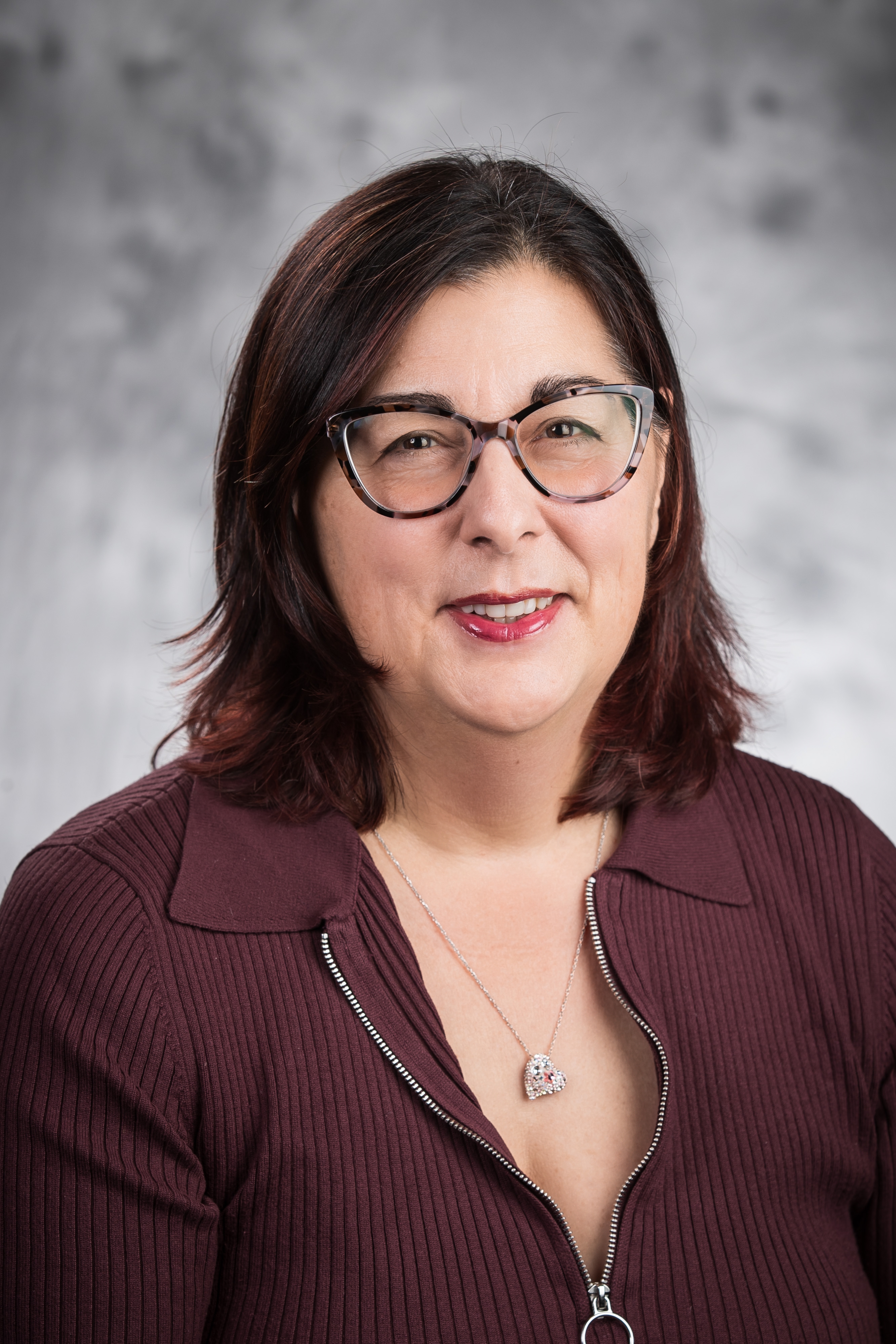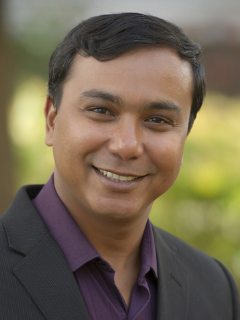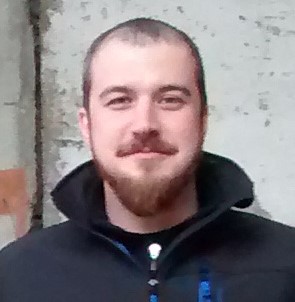
Date: Mon Jun 25, 2018
Time: 1:30 PM - 3:00 PM
Moderator: Robin Gebbers
Soil microbial communities mediate many important soil processes in agricultural fields, however their spatial distribution at distances relevant to precision agriculture is poorly understood. This study examined the soil physico-chemical properties and topographic features controlling the spatial distribution of soil microbial communities in a commercial potato field in eastern Canada using next generation sequencing. Soil was collected from a transect (1100 m) with 83 sampling points in a landscape with rolling topography. A significant negative correlation (r = -0.73) between soil pH (range 4.3-7.0) and slope gradient (range 2-12 %) was observed, a finding attributed to greater soil erosion on steep slopes resulting in exposure of low pH subsoil. Proteobacteria, Actinobacteria and Acidobacteria were the most abundant bacterial phyla, with average relative abundance of 32, 21 and 15%, respectively. Bacterial diversity at the phylum level was found to be primarily related to soil pH. Ascomycota and Basidiomycota were the most abundant fungal phyla, with average relative abundance of 69 and 15%, respectively. Fungal diversity at the phylum level was primarily related to soil organic carbon (SOC) and soil pH. Semivariogram analyses revealed that the bacterial α-diversity, the relative abundance of most bacterial and fungal phyla, pH and slope gradient showed strong to medium spatial autocorrelations with a range between 30 to 92 m. Soil microbial communities varied in a systematic and predictable pattern in response to variation in soil physico-chemical properties and topographic features. The two major factors influencing bacterial and fungal communities (soil pH and SOC) can be managed through application of lime and organic amendments, and therefore it may be possible to influence diversity of microbial communities at spatial scales relevant to precision agriculture.

A fundamental aspect of precision agriculture or site-specific crop management is the ability to recognize and address local changes in the crop production environment (e.g. soil) within the boundaries of a traditional management unit. However, the status quo approach to define local fertilizer need relies on systematic soil sampling followed by time and labour-intensive laboratory analysis. Proximal soil sensing offers numerous advantages over conventional soil characterization and has shown potential for management zone (MZ) delineation and site-specific crop management. While electromagnetic induction (EM) based sensors have been widely used, the use of spectroscopy-based sensors is still in its infancy. This study evaluated the capability of spectroscopy-based Veris P4000 soil sensor in predicting soil properties and two proximal soil sensors (EM-based DUALEM21S and Veris P4000) in delineating MZs from two commercial potato (Solanum tuberosum L.) fields from New Brunswick, Canada. The proximal sensor collected data (apparent electrical conductivity ECa and spectra) were then used to delineate MZs using the clustering method. The efficiency of the MZ delineation was then compared with the laboratory measured soil properties and the yield monitor data collected over three years. In total, 295 soil samples were collected and analyzed using standard laboratory procedures. DUALEM21S was used to map the ECa at four depths. Visible and near infrared (Vis-NIR) spectra (397-2212 nm wavelength) were collected in triplicate for all samples using the spectrometer from Veris P4000 system in laboratory conditions. The dataset was separated into calibration (70%) and validation subset (30%) and partial least square regression (PLSR) models with bootstrapping were developed and validated against laboratory measured soil properties. Spectroscopic system well predicted soil properties. It showed the strongest potential to predict soil organic matter (SOM) with the highest accuracy. Other soil properties that were either positively (e.g. Ca, Mg) or negatively correlated (e.g. pH, buffer pH) with SOM were also predicted with good accuracy. The point samples were then interpolated to field boundaries and used to develop MZs. The number of MZs were then optimized following the normalized classification entropy (NCE) and the fuzziness performance index (FPI). While lab measured physio-chemical properties identified three optimum MZs, the spectra predicted properties and DUALEM21S data identified two MZs. The choice of two MZs was consistent with the number of MZs identified from the yield monitor data. Clay content, soil moisture content and P concentration showed strongest correlations with yield variability among soil properties. DUALEM21S data from all four depths were strongly correlated with yield. In contrast, measured spectra showed relatively weak prediction (except principle component 1, PC1 and PC3) of yield. These results suggest that the EM based sensor was effective in delineating MZ, whereas more advancements are required to use spectra in MZ delineation.



Electromagnetic induction (EMI) proximal soil sensor systems can deliver rapid information about soil. One such example is the DUALEM-21S (Dualem, Inc. Milton, Ontario, Canada). EMI sensors measure soil apparent electrical conductivity (ECa) corresponding to different depth of investigation depending on the instrument configuration. The interpretation of the ECa measurements is not straightforward and it is often site-specific. Inversion is required to explore specific depths. This inversion process is an “ill-posed” problem which might lead to non-existing, or non-unique solutions. Commonly, a complicated regularization method is chosen to tackle this problem. In this paper, a simple exhaustive “brute-force” method was developed to characterize soil layering depths and their corresponding ECa values. A two-layer soil ECamodel was used to depict the depth of the topsoil layer and its corresponding ECa value. The two-layer model represents a shallow (topsoil) and deeper subsoil depths. From the high density DUALEM-21S input data, the “brute-force” algorithm was successfully converged to the minimum mean squared error (MSE) for each depth increment. The software’s GUI was intuitive and provided an up to date progress of the calculations. This algorithm has been tested successfully to determine the topsoil and subsoil ECa values together with muck soil layer depth on the 25-ha field near Naperville, Quebec, Canada.

Knowledge of spatial and temporal variability of soil moisture is critical for site specific irrigation management at field scale. However, installation feasibility, cost and between-sensor variability restrict the use of many point–based sensors at field scale. Active heat pulse method with fiber optic temperature sensing (AHFO) has shown a potential to provide soil moisture data at sub-meter intervals along a fiber optic cable to a distance >10000 meters. Despite the limited number of studies on soil moisture measurement using AHFO, this study evaluated the feasibility of AHFO to provide soil moisture data at sub meter (spatial) and diurnal to seasonal (temporal) scales in a subsurface drained field. Heat pulses of five minutes durations were applied at a rate of 7.28 Wm-1 through six fiber optic cable transects installed at three depths (0.05, 0.10 and 0.20 m) at six hours interval in a day. A distributed temperature sensing (DTS) instrument was used to estimate the cumulative temperature increase (Tcum) at locations along the cable. Indirect relationships between Tcum and soil moisture was developed and validated for each depth using the soil moisture measured by the commercial point–based sensors (calibrated by the gravimetric method). Sigmoidal (logistic) relationship provided the best fit between soil moisture and Tcum for the three depths with R2 values of 0.89, 0.91 and 0.91 respectively. In comparison to the calibrated commercial soil moisture sensors, AHFO showed predictive accuracies; RMSE of 3, 4 and, 4 % for 0.05,0.10 and 0.2 m depths, respectively. Further, it showed strong agreement between AFHO predicted and commercial sensors measured soil moisture values; correlation coefficient (r) of 0.87, 0.46 and 0.86 for the three depths, respectively. Results of this study showed the capability of AHFO method to provide soil moisture data at sub-meter intervals (spatial) along the fiber optic cable transects and diurnal to seasonal scales (temporal) with satisfactory accuracy.

One of the limiting factors to characterize the soil spatial variability is the need for a dense soil sampling, which prevents the mapping due to the high demand of time and costs. A technique that minimizes the number of samples needed is the use of maps that have prior information on the spatial variability of the soil, allowing the identification of representative sampling points in the field. Management Zones (MZs), a sub-area delineated in the field, where there is relative homogeneity in yield potential, due to similar soil nutrients and environmental effects caused by similar landscape or soil conditions, has been widely accepted in management systems willing to apply precision agriculture techniques. MZs can be delineated using soil apparent electrical conductivity and local relief conditions variability, based on the clustering algorithm. Once the MZs relatively similar in terms of soil characteristics are created, there are no longer the need to take many soil samples to characterize the field. However, remains the question: where the best places are to take a limited number of soil samples within the MZ, where the mean value obtained from these samples represents the overall mean value of the attribute corresponding to the entire zone. This study aimed to evaluate a methodology to define the best locations for soil sampling to represent with a proper resolution of the physic-chemical soil variability. The best location for each soil sample was defined using the Fuzzy C-Means algorithm with some modifications. To evaluate the performance of the propose methodology, one field of 93 ha of sugarcane, was used to delineate the management zones and select the best places for soil sampling. The results obtained using 1 sample per 3 hectares by a guided sample grid was compared with the regular soil sampling, which uses, approximately, 1.3 sample per hectare, evaluating the soil physic and chemical attributes. The results show that, with this approach, it is possible to create targeted sampling grids with high precision for specific nutrients management, reducing costs and increasing the sustainability.

Over the past 40 years, airborne geophysics and geomatics has become an effective and accepted technology for mapping various signatures on the Earth’s surface and sub-surface. But so far, its airborne application in agriculture is perceived as sub-practical and/or its real value unknown to most stakeholders. In this paper, we are reviewing major technical and commercial achievements and latest developments to date, but also potentials for new developments and applications, of airborne geophysics (and geomatics) for soil variability mapping. The contribution of airborne agri-geophysics/geomatics is based on the efficient and versatile integration of four main components: carriers; sensors; data/information; and knowledge. The use of a small and stable airborne multi-sensor data measurement platform, resulting in versatile and highly flexible surveys flown at low/reasonable cost of operation, is the recurring wish of many stakeholders in the agriculture industry. The past years GyroLAG brought to reality the next generation of advanced and innovative light airborne remote sensing platforms with specially designed gyrocopters and also light fixed-wing aircraft. Sensors allow the recording of meaningful information for the critical end product (i.e.knowledge). New technologies and combinations of those technologies must be enhanced from the traditional off-the-shelves offers by manufacturers or traditional airborne geophysics service providers which are expensive, heavy, not necessarily fit for purpose and definitely not integrated, or capable of being so, for multi-sensor application to agricultural problems. Those sensors include notably: (a) fluxgate magnetic; (b) CsI gamma spectrometer; (c) thermal cameras; (d) NIR hyper-spectral camera; (e) portable SWIR camera; (f) use of reflected GNSS data; and (g) electromagnetic. The above airborne geophysics/geomatics tool box allows collection of soil data such as: potassium, thorium and uranium concentrations; conductivity and/or resistivity values; total magnetic intensity; temperature; and moisture. Through further value-adding on their own or in combination with other data, that information can then be converted into knowledge such as: soil types; soil zoning; soil variability; soil physical parameters (porosity, density, magnetic susceptibility, etc); soil depth; soils clay content; ground faults location; soil moisture; soil erosion risks; nematodes preferential habitat imaging; and soil chemistry.
